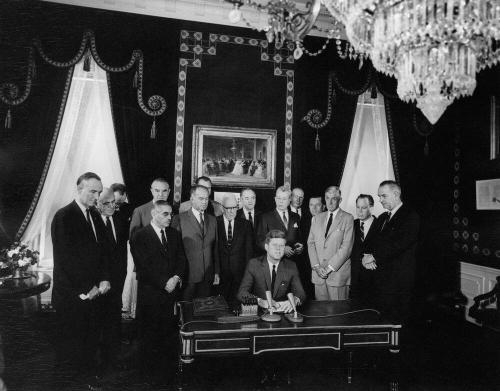When Obama visits India in November, he must secure a deal on Kashmir, the disputed province where unrest is building again. At stake is another Indo-Pakistani confrontation—with nuclear potential.
Just as the war in Afghanistan is getting bloodier and Pakistan is drowning in floods, a new (yet old) battlefield is heating up in Kashmir. President Barack Obama’s strategy for dealing with Afghanistan and Pakistan always needed a Kashmir component to succeed; that need is becoming more urgent and obvious now. His trip to India in November will be a key to addressing it.
An independent Kashmir is not in the offing. Neither India nor Pakistan would ever accept that outcome. Pakistan has been trying to annex Kashmir since the hour it was born in 1947 and has long and established ties to many terrorist groups operating in the province like Lashkar e Tayyiba, the group that attacked Mumbai in 2008. India is determined to hold on to the part of Kashmir it won in the 1947-48 war at all costs.
This summer, after several years of relative quiet, the Muslim majority in the Vale of Kashmir, the heart of the province, began protesting against Indian occupation. Young Kashmiris began protesting against what they allege are Indian occupation forces’ human-rights abuses. Up to 700,000 Indian army and police garrison the province with a very heavy hand. Stone-throwing produced clashes with the Indian army. Over a hundred have died in what is becoming a Kashmiri version of the first Palestinian intifada of the late 1980s. Polling shows the majority of the Muslim population wants independence.
There is a solution, however, to the problem. The cease-fire line that divides Kashmir between India and Pakistan, the line of control, would become the agreed international border between the two countries. At the same time, it would become a permeable border for Kashmiris, who could move back and forth easily. Both countries’ currencies would be valid on both sides of the line. The two parts of Kashmir, Pakistani Azad Kashmir and Indian Kashmir and Jammu, would handle local issues like tourism, sports, and the environment in joint shared institutions along the lines of how Ireland and Ulster work together now on all Northern Ireland issues.
The broad outlines of this deal were worked out by then Pakistani President Pervez Musharraf and Indian Prime Minister Manmohan Singh in secret back-channel talks four years ago. Musharraf told me that while a deal was not consummated, they were very close when his domestic political problems shut down the exercise. Lashkar e Tayyiba’s Mumbai attack was designed to kill it for good.
For the U.S., reducing and resolving the India-Pakistan Cold War before it goes hot is critical to stability in South Asia, isolating the jihadi extremists and preventing a war in South Asia that could go nuclear.
The new uprising in the Kashmiri capital of Srinagar makes it imperative to get back to the back channel and finish the talks. Pakistani President Asif Zardari probably would embrace them eagerly, but he is too weak to go alone. He needs the Pakistani army on board, and it is unclear if the army chief, General Kayani, Musharraf’s intelligence chief during the old talks, is on board. It will take strong and brave leadership to get a deal, but it is critical to defeating the jihadist Frankenstein that now terrorizes Pakistan itself. If left to itself, the Pakistani army will be tempted to intervene in Kashmir again to help the until now largely indigenous revolt, running the risk of another Indo-Pakistani confrontation.
Singh undoubtedly wishes he had seized the pending deal with Musharraf when it was there. India cannot become a global power with a prosperous economy if its neighbor is a constant source of terror armed with the bomb. A sick Pakistan is not a good neighbor.
For the U.S., reducing and resolving the India-Pakistan Cold War before it goes hot is critical to stability in South Asia, isolating the jihadi extremists and preventing a war in South Asia that could go nuclear. But India is understandably averse to American meddling in its internal affairs. President Obama learned that in the transition, when he briefly floated the idea of an American special envoy for Kashmir and he got a firestorm of Indian resistance.
Obama’s challenge is to quietly help Islamabad and New Delhi work behind the scenes to get back to the deal Musharraf and Singh negotiated. He will have a chance to work this subtly when he visits India in November. The new Kashmiri intifada has put the issue back on the front burner. A deal is good for America, India, Pakistan, and especially the Kashmiris, who have suffered enough.



Commentary
Op-edWorse than Afghanistan
September 26, 2010